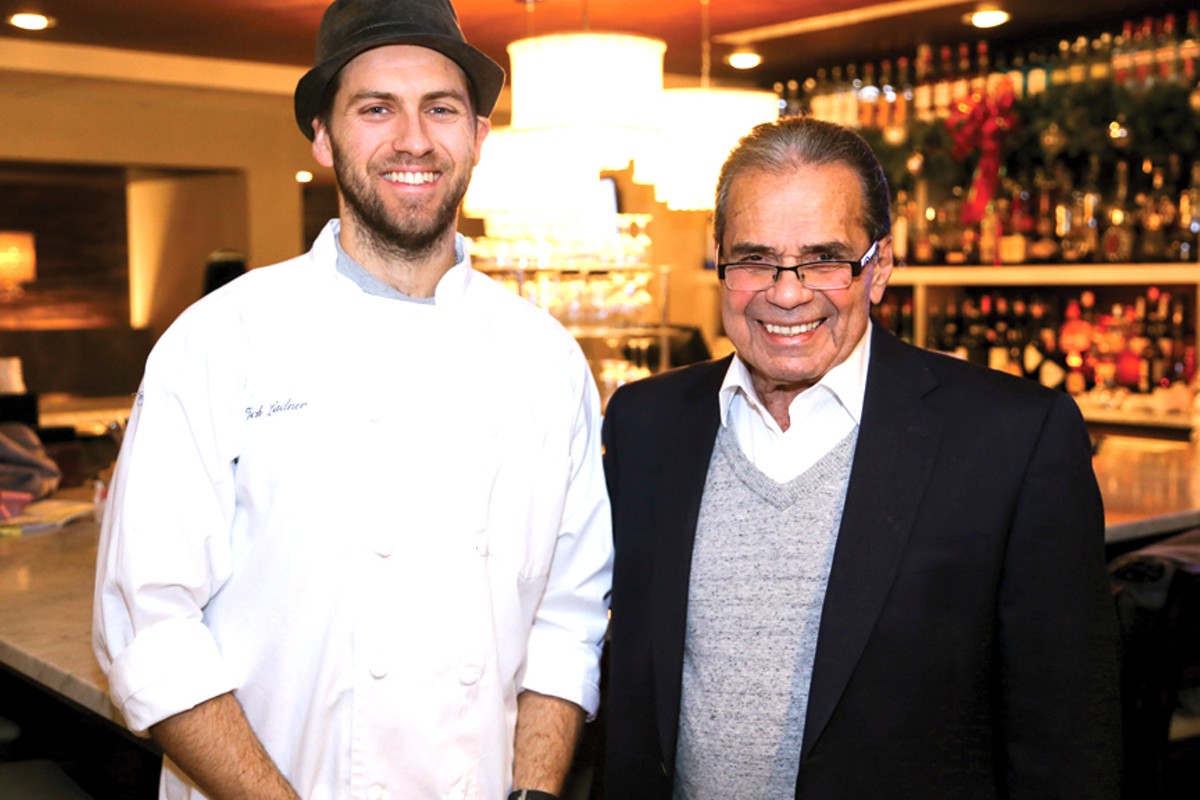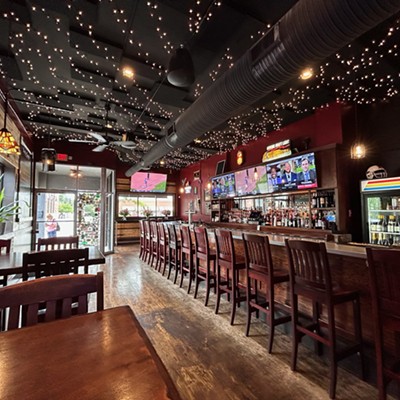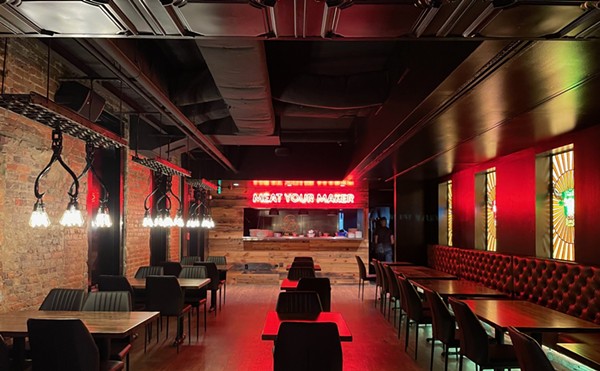On Thursday, Nov. 29, 130 people showed up to Ristorante Giovanni's for a fall-themed Italian dinner that began with a Swiss chard and shaved fennel salad and ended with chocolate mousse with whipped tonka bean cream. In between, guests enjoyed pumpkin ravioli with walnuts, sage and brown butter, potato-crusted sturgeon, and beef braciole with braised vegetables and polenta.
Every meal at Giovanni's is special, but this one managed to top them all. It was, after all, the 40th anniversary of owner Carl Quagliata's seminal Beachwood restaurant.
In an era when venerable Cleveland eateries continue to vanish from the landscape, replaced by trendy bistros that seem to cater to an entirely different species of diner, respect must be paid to Quagliata. Since opening his first restaurant 50 years ago, the culinary entrepreneur has been operating like a risk taker with a crystal ball. Name a trend and he's trotted it out and hit a grand slam. Charcuterie, gourmet food market, celebrity chefs, tapas? Done. It. All.
With zero restaurant experience between them, Carl, his parents, and his brothers John and Al converted a long-vacant building in Mentor into an elegant Italian restaurant. When it opened in 1967, the White House was considered expensive, topping out at $5.95 for twin lobster tails. Three years later the team doubled down, opening the opulent Tre Scalini Room on the same property.
"We did everything tableside, everything," Quagliata says.
Three-hour meals were customary, where a staff of 30 attended to a dining room of 75 guests. Staffers flambeed crepes Suzette, carved chateaubriand, and dished up desserts from carts that glided around the room. In the center of the Tiffany-illuminated cocoon was a towering oak tree, around the base of which was a pond filled with live lobsters.
While those restaurants were still humming, Quagliata opened Giovanni's in its present location, the ground floor of a commercial office building. Despite the bland wrapper, the dining room was every bit as polished as the best restaurants in town. Crystal chandeliers, thick tablecloths, subdued lighting, massive wine list and a shiny copper cappuccino machine quickly made diners forget that they were seated floors below law and dental offices.
Quagliata shuttered the White House after a 20-year run because the land was sold out from under him, but he didn't sit still for long. He gambled on a space at the corner of West Sixth and St. Clair in the Warehouse District, an area better known at the time for its homeless shelters and porn shops than haute cuisine.
"The day I told my mother that I signed a lease for the space, she and her girlfriends drove down to look at it," Quagliata recalls. "She started crying and said I was crazy because the area was so bad. But I always loved that corner."
In 1992, Piccolo Mondo opened up to rave reviews, helmed by a 22-year-old chef named Michael Symon. The high-ceilinged room was deliriously cacophonous, and diners supped on small plates, pizza and pasta, and wood-grilled entrees. An adjoining gourmet market sold many of the high-quality ingredients utilized in the bistro. But after a white-hot run, that ship, too, had sailed.
"The only problem with trendy restaurants is they only last so long," Quagliata explains. "Piccolo Mondo lasted like seven years before I had to make a major change or sell it. Giovanni's, on the other hand, we've been busy ever since we opened."
Over the years, other high-powered chefs with names like Boccuzzi, Abramof and others have made their way through Quagliata's finishing school. His latest prodigy is Zachary Ladner, who impressed his way to executive chef in just four months' time, after the previous head chef abruptly departed.
"I convinced Carl to let me try to run the kitchen," Ladner, a Culinary Institute of America grad, says. "I said give me a week."
That was seven years ago, and in that time, the young chef has only managed to impress his boss even more.
"Zack is the first chef I let do his own thing," Quagliata beams. "That's how much confidence I have in him. He does a better job with my recipes than I do."
Ladner understands that the success of a classic like Giovanni's depends on more than recipes, ingredients or even technique. It's the whole package.
"You don't come here and spend $50 on an entree because you don't want to cook," the chef says. "You come here because it's an experience. We are always talking about things we can do to appeal to all of their senses so that there are more things to remember."
For Quagliata, it's been a wildly successful marathon, but he's enjoying every second of it.
"This is a really big deal," he says. "I mean, to be here 40 years in the same location, and still be busy, thank god for that. I'll be 78 next month and I still feel young."










